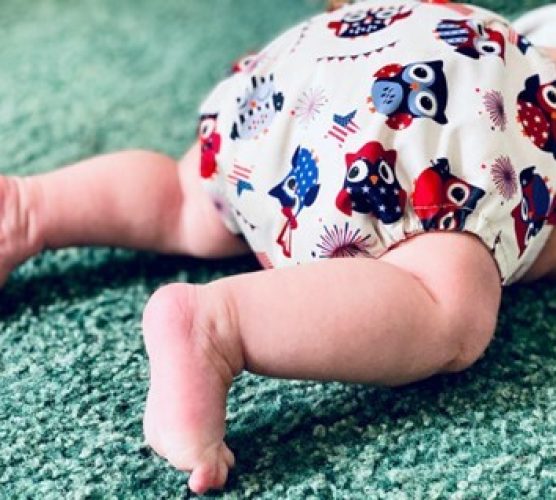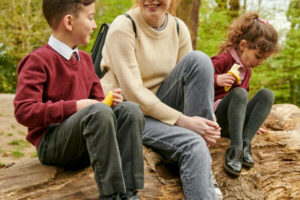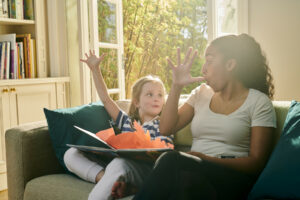It’s no secret that our planet is going through some tough times. With heatwaves breaking records and single-use masks piling up, it’s clear that our actions are having an impact on the environment.
But here’s the thing, even though one person’s impact might seem small, when we all come together, we can make a real difference. By teaching future generations to think planet-first through leading by example, we can help tackle climate change and leave a better world for them to live in.
As a childcare provider, you have an amazing opportunity to influence the next generation of our planet’s caretakers and to do your bit for the environment at the same time.
It can seem overwhelming to know where to begin, but we’re here to break down the changes and swaps you can make to create a sustainable nursery at home.
Getting started with your sustainable home nursery
To successfully create a sustainable nursery at home, sustainability needs to be incorporated into your ethos so that everyone can buy in. This means your family, the children you care for, and their parents, need to be enthusiastic about creating a greener planet and willing to be flexible and try new things.
For your family, this might mean you spend a little more time researching and learning after work, for the children, they may need to try new foods or play with different toys to what they’re used to, and parents may have to pay a slightly higher fee for your home nursery.
Regardless of whether your ambitions are big or small, you can make a big difference by setting good examples on the little things. For better or worse, children will copy you. If you always turn the lights off in the toilet, kids will begin to follow suit. If you remember to recycle milk bottles, children will learn to use the recycling bin too. Use your power wisely!

Photo by Li-An Lim on Unsplash
Hygiene at a sustainable nursery
One of the biggest pain points among early years childminders, nannies and nursery workers is nappies. It’s common that the desire to be more sustainable in your childcare practice comes from a wish to be free of the mountains of nappies left at the end of a day. It can be both wasteful and stressful to be left with piles of plastic that you know will go on to sit in landfill. Luckily, there are increasingly more sustainable options when it comes to nappies.
Sustainable nappies
There are two options to combating the plastic waste created by traditional nappies. The best (but priciest) solution is to buy reusable cloth nappies for your home nursery. You will have to wash them between uses, but they have lots of poppers on them so they can be used on babies of various shapes and sizes — a space-saving bonus!
Our top pick is Modern Cloth Nappies — they’re award-winning for their utility and design and promise premium leak protection. If you can’t afford to supply nappies for each child, you could create a reusable-nappy-only policy where parents must provide their own.

Photo by Laura Ohlman on Unsplash
If it’s not possible to switch to reusable cloth nappies, disposable nappies with eco-friendly claims are an alternative. While no nappy is 100% biodegradable — because the eco-friendly materials are mixed with plastic — you can find nappies that have some eco-credentials from the manufacturing process.
Look out for brands that claim to use renewable energy, organic cotton, or plastic-free packaging. But remember to take all of these environmental claims with a pinch of salt.
For practical reasons, it’s likely that a mix of semi-biodegradable nappies and cloth nappies might be required. Cloth nappies might feel overwhelming full-time and create lots of laundry.
A hybrid model will help you minimise your environmental impact and save you in situations when convenience is king. Rather than sending your nappies to landfill, you could use a recycling supplier to collect and dispose of your waste as responsibly as possible.
Sustainable wipes
A quick and easy swap for disposable baby wipes (which traditionally contain plastic) is using cloths and water. They can be popped in the laundry and reused time and time again.
You can also find biodegradable wipes — but do check packaging carefully to see if they can be composted at home.
Sustainable cleaning products safe for babies
Kids make a lot of mess (it’s called messy play for a reason!) but a clean environment is essential to prevent germs from spreading from child to child. Childminders spend a lot of time cleaning — but did you know that cleaning products can be incredibly harmful to the environment?
Big brand names are made with nasty chemicals, and animal fat, use huge amounts of water to produce and are packaged in non-recyclable plastic. Brands like Method and Smol are trying to combat this — they use responsibly sourced materials, offset their carbon footprint and use recycled and recyclable packaging.
Another top tip, whatever the brand, is to buy cleaning products in bulk to avoid repeatedly buying single-use plastic. Alternatively, you could try making your own cleaning products at home with natural ingredients like lemons, baking soda, and vinegar — there are lots of recipes online.

Photo by Precious Plastic Melbourne on Unsplash
Playing and learning at a sustainable nursery
When buying toys for your sustainable nursery, you can save money and the planet by buying secondhand. There are lots of pre-loved toys in excellent condition on Facebook Marketplace, ebay, and in charity shops that are ready to go to a new home.
If you can’t find what you’re looking for and need to buy new, consider choosing wooden toys over plastic toys as their manufacturing process is less harmful to the environment.

Activities and arts and crafts can be an easy thing to make green improvements. Rather than using fresh paper and plastic glitter, why not swap them out for biodegradable or recycled versions?
Even better, instead, you could make flower crowns from foraged materials, or do junk modeling from items in the recycling bin. Cardboard loo rolls make for an excellent pair of binoculars!
For kids, there’s no better learning environment than the great outdoors. Research shows that kids who breathe in the fresh air and interact with nature are healthier, and happier and gain an early understanding of their effect on the environment.
So rather than focus on activities indoors which might be adding to your carbon footprint, why not spend more time outdoors playing and learning about the world around us.

If you have a balcony or outdoor space at home, why not find different uses for everyday items like yoghurt pots, teapots, or tires by growing flowers or vegetables? Don’t forget to collect rainwater to water your plants!
Food at a sustainable nursery
Planning your menu carefully can make a big difference to the sustainability of your nursery. Meat accounts for nearly 60% of all greenhouse gases, so consider cutting down on the amount of meat you serve. Children can receive all the protein they need from foods like nuts, yoghurt, pulses, and eggs.

All food should be produced as local to your home nursery as possible to reduce your food’s air miles. Read the origin labels in the supermarket, and support local butchers or fishmongers if you can.
If it’s financially viable, serving organic food is amazing for children’s health and the environment — organic farms use less energy and produce less emissions.
One of the easiest ways to create a more sustainable nursery at home is to cut down on plastic food packaging. This means only buying loose vegetables, or having a veg box delivered to you, and making dips and sauces yourself. Investing in a veg box and a good blender could save heaps of plastic packaging every year.
Finally, a fun project to do with kids is setting up composting. This will reduce the amount of food waste that goes to landfill, and teach children to separate and sort their waste.

Photo by Lenka Dzurendova on Unsplash
The power of teaching children about sustainability
Hopefully this has given you some ideas on how to make your home nursery sustainable and the impact it could have on children and the planet. It might sometimes feel a little slower or harder, but showing kids sustainable practices from a young age starts a snowball effect. Plus, it will all be worth it when you hear a toddler ask their parents if they compost at home!
If you’re looking to become an Early Educator and open your own sustainable nursery, apply here.



